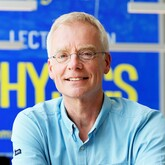Coherent Interactions between Electrons and Light
A special issue of Applied Sciences (ISSN 2076-3417). This special issue belongs to the section "Optics and Lasers".
Deadline for manuscript submissions: closed (21 September 2021) | Viewed by 3184
Special Issue Editor
Special Issue Information
Dear Colleagues,
In the past few years the research area involving the intricate interplay between light and free electrons has developed into an exciting new field: free electron quantum optics. Harnessing the weak interaction between free electrons and light requires either very strong electromagnetic fields or the close vicinity of nanostructures, which has only become possible with recent developments in laser and electron beam technology.
Electron beams now make it possible to generate, probe and control light at length scales far below the diffraction limit, enabling fundamental studies of nanophotonics. Photon-induced near-field electron microscopy has shown great potential for visualizing dynamic phenomena such as plasmonics with very high spatial and temporal resolution. Vice versa, the near fields of optically excited plasmon polaritons in nanostructures offer new ways to manipulate and shape electron beams, ultimately enabling aberration-free electron imaging. Strong laser fields can be employed to coherently manipulate the electron wave function in free space by the ponderomotive force for realizing, for example, matter-free Zernike electron phase plates and coherent electron beam splitters. These and other methods for electron wave manipulation offer the intriguing prospect of interaction-free electron microscopy: the “quantum electron microscope”. Finally, the combination of strong laser fields and very precisely tailored 3D nanostructures opens the way to high-gradient dielectric laser acceleration: a particle accelerator on a chip.
The burgeoning field of free electron quantum optics has already generated many fundamental insights and important applications. The latest developments in this exciting new field will be shared in this special issue. We invite researchers and investigators to contribute their original research or review articles to this special issue.
Prof. Dr. Jom Luiten
Guest Editor
Manuscript Submission Information
Manuscripts should be submitted online at www.mdpi.com by registering and logging in to this website. Once you are registered, click here to go to the submission form. Manuscripts can be submitted until the deadline. All submissions that pass pre-check are peer-reviewed. Accepted papers will be published continuously in the journal (as soon as accepted) and will be listed together on the special issue website. Research articles, review articles as well as short communications are invited. For planned papers, a title and short abstract (about 100 words) can be sent to the Editorial Office for announcement on this website.
Submitted manuscripts should not have been published previously, nor be under consideration for publication elsewhere (except conference proceedings papers). All manuscripts are thoroughly refereed through a single-blind peer-review process. A guide for authors and other relevant information for submission of manuscripts is available on the Instructions for Authors page. Applied Sciences is an international peer-reviewed open access semimonthly journal published by MDPI.
Please visit the Instructions for Authors page before submitting a manuscript. The Article Processing Charge (APC) for publication in this open access journal is 2400 CHF (Swiss Francs). Submitted papers should be well formatted and use good English. Authors may use MDPI's English editing service prior to publication or during author revisions.
Keywords
- free electron quantum optics
- cathodoluminescence imaging spectroscopy
- nanophotonics
- photon-induced near-field electron microscopy
- kapitza-dirac effect
- ponderomotive phase plate
- optical electron beam shaping
- ultrafast electron microscopy
- quantum electron microscopy
- quantum degenerate electron beams
- dielectric laser acceleration
- particle accelerator on-a-chip





